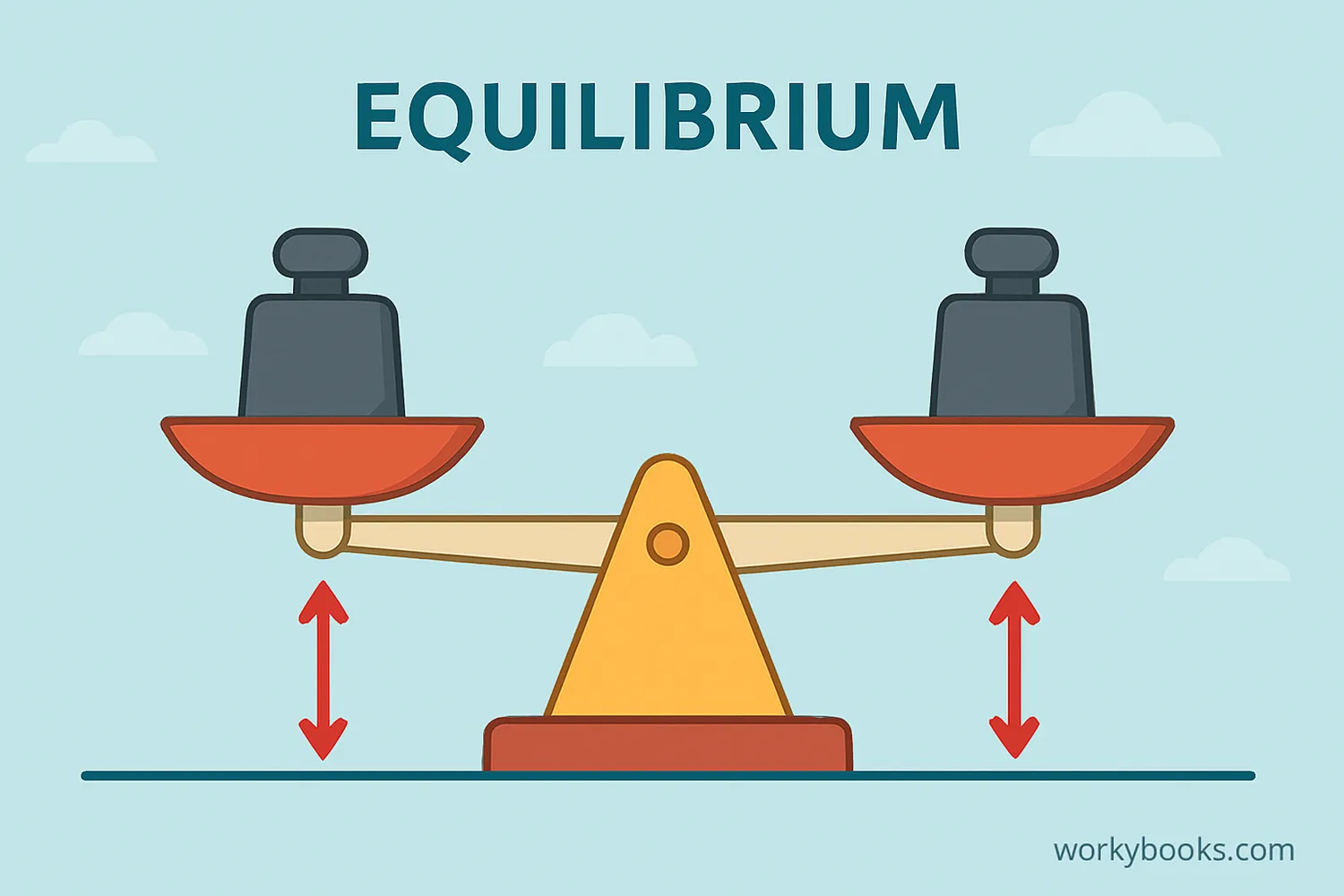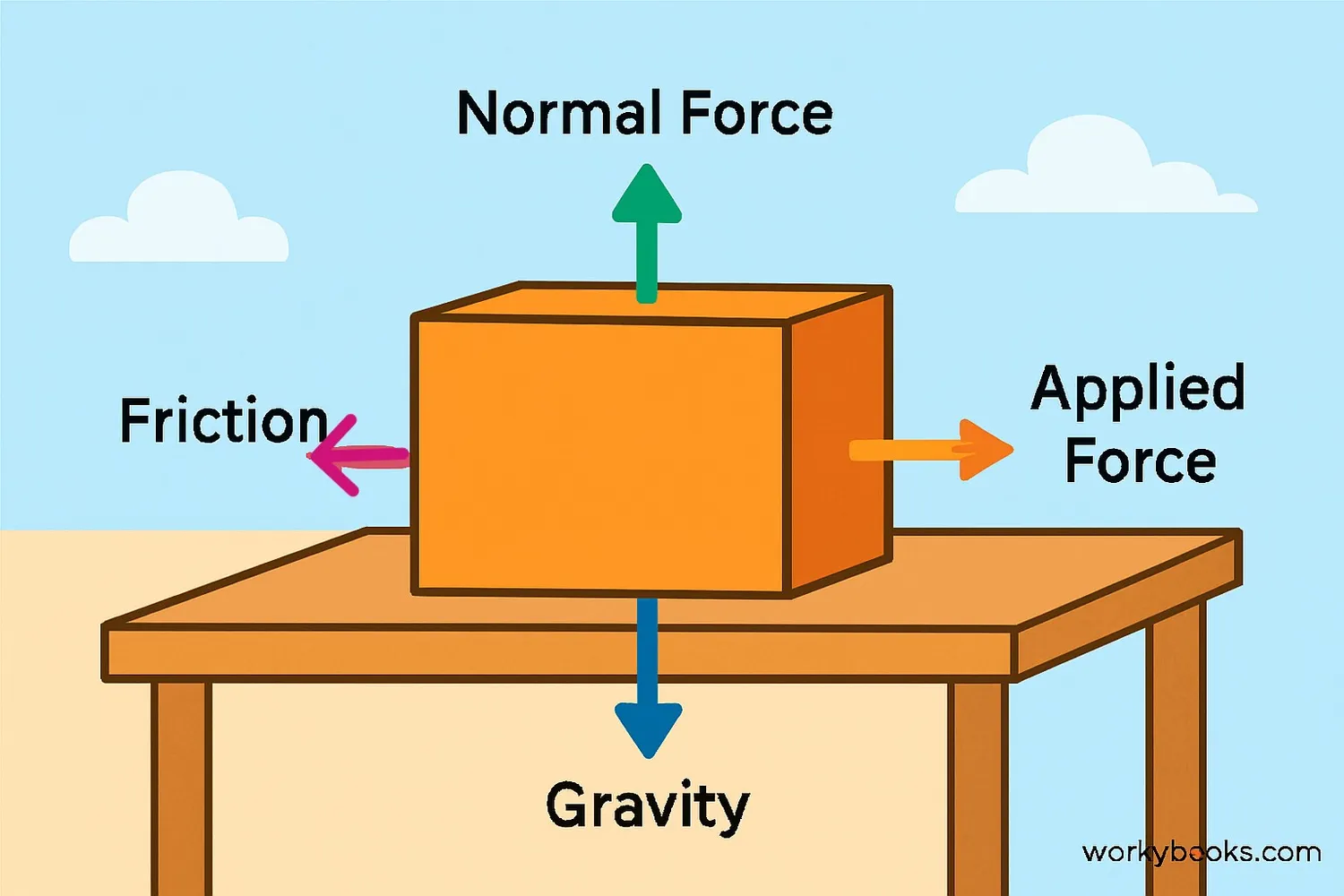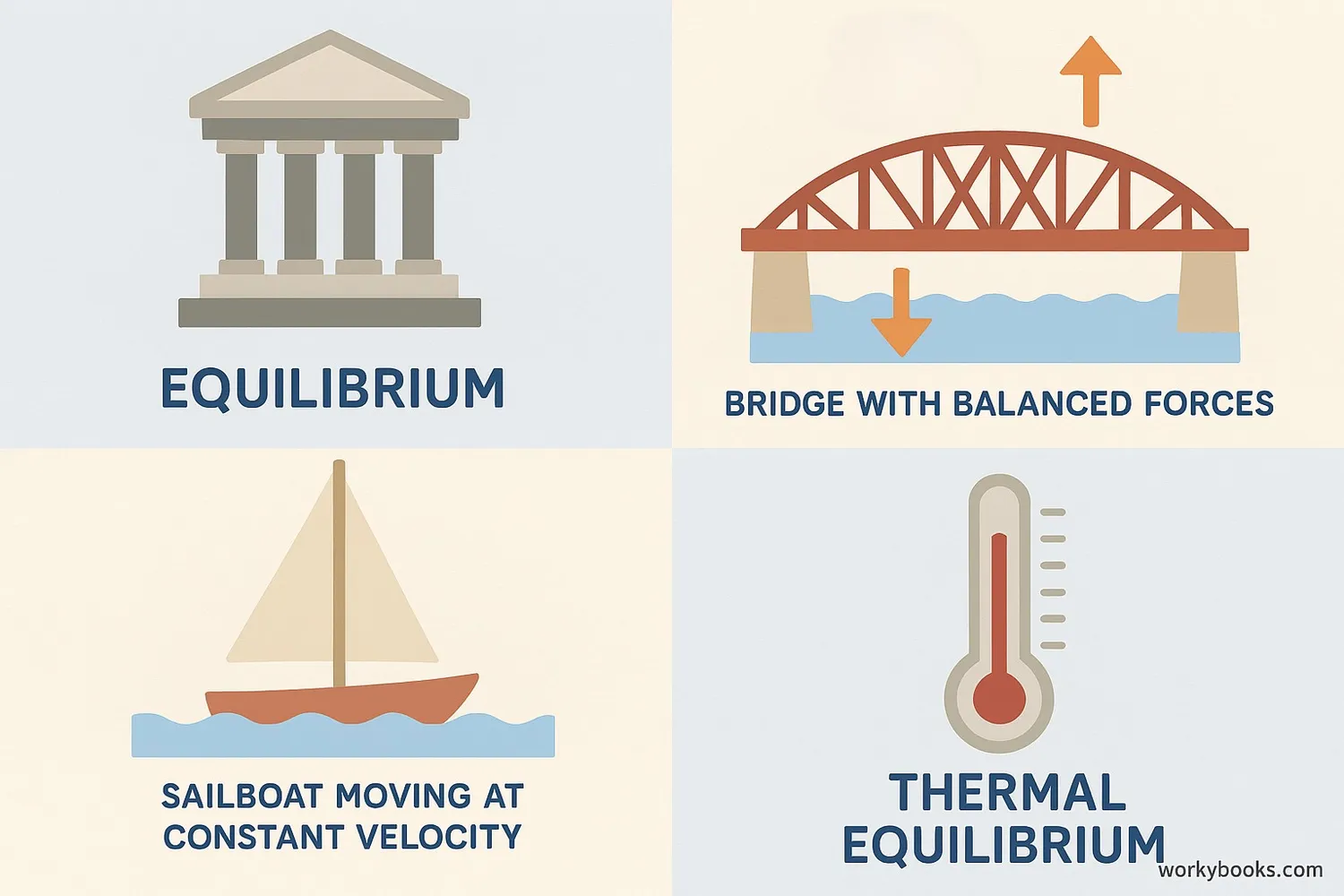Equilibrium - Definition, Examples, Quiz, FAQ, Trivia
Discover how balance and forces work together in our world!
What is Equilibrium?

Equilibrium is a state of balance where all forces acting on an object cancel each other out. When something is in equilibrium, it's not accelerating - it's either staying completely still or moving at a constant speed in a straight line.
Think of equilibrium like a perfectly balanced seesaw. When both sides have equal weight, the seesaw stays level and doesn't move up or down. This is what scientists mean when they say something is in equilibrium - all the pushes and pulls are balanced!
Science Fact!
Newton's First Law of Motion tells us that objects at rest stay at rest, and objects in motion stay in motion unless acted upon by an unbalanced force. This is the principle behind equilibrium!
Types of Equilibrium
There are several types of equilibrium in physics. Let's explore the main ones:
Static Equilibrium
Object is completely still with no motion
Dynamic Equilibrium
Object is moving at constant velocity
Stable Equilibrium
Object returns to position after small displacement
Unstable Equilibrium
Object moves away from position after small displacement
Neutral Equilibrium
Object stays in new position after being moved
Each type of equilibrium has different characteristics. A book on a table is in static equilibrium. A car moving at a steady 60 km/h on a straight highway is in dynamic equilibrium. A cone sitting on its base is in stable equilibrium, while balancing a pencil on its tip creates unstable equilibrium!
Forces in Balance

For an object to be in equilibrium, the net force acting on it must be zero. This means all the forces balance each other out. There are two important conditions for equilibrium:
1. Translational Equilibrium: The sum of all forces equals zero. No linear acceleration.
2. Rotational Equilibrium: The sum of all torques (rotational forces) equals zero. No rotational acceleration.
The center of mass is an important concept in equilibrium. It's the average position of all the mass in an object. For an object to be stable, its center of mass must be properly supported.
Torque and Rotation
Torque is a twisting force that causes rotation. For rotational equilibrium, the clockwise torques must equal the counterclockwise torques. This is why you need to sit closer to the pivot on a seesaw if you're heavier than the person on the other side!
Real-World Examples

Equilibrium is all around us in everyday life. Here are some common examples:
Structures
Buildings and bridges are designed to be in equilibrium with all forces balanced
Sailing
A sailboat moving at constant speed is in dynamic equilibrium
Thermal Equilibrium
When objects reach the same temperature and heat transfer stops
Other examples include:
• A book resting on a table (static equilibrium)
• A ladder leaning against a wall (static equilibrium with balanced forces)
• A car cruising at constant speed (dynamic equilibrium)
• A chemical reaction where forward and reverse rates are equal
• The Earth's temperature reaching balance with energy from the Sun
Understanding equilibrium helps engineers design safer structures, scientists predict how systems will behave, and even helps us understand everyday phenomena!
Equilibrium Quiz
Test your equilibrium knowledge with this quiz! Answer all 5 questions to see how much you've learned.
Frequently Asked Questions
Here are answers to some common questions about equilibrium:
Interesting Equilibrium Facts
Discover some amazing facts about equilibrium!
Engineering Marvels
The Golden Gate Bridge is a masterpiece of equilibrium engineering. Its design carefully balances tension and compression forces to keep the structure stable even in strong winds and earthquakes.
Cosmic Balance
The Moon is in a dynamic equilibrium with Earth. Gravity pulls it toward us, but its orbital motion keeps it from falling into our planet, creating a perfect balance that maintains its orbit.
Fishy Equilibrium
Fish have a special organ called a swim bladder that helps them maintain equilibrium in water. By adjusting the amount of gas in this bladder, they can control their buoyancy and stay at their desired depth.
Body Balance
Your inner ear contains fluid-filled canals that help you maintain your equilibrium. When you spin around and feel dizzy, it's because this fluid is still moving, tricking your brain into thinking you're still spinning!


